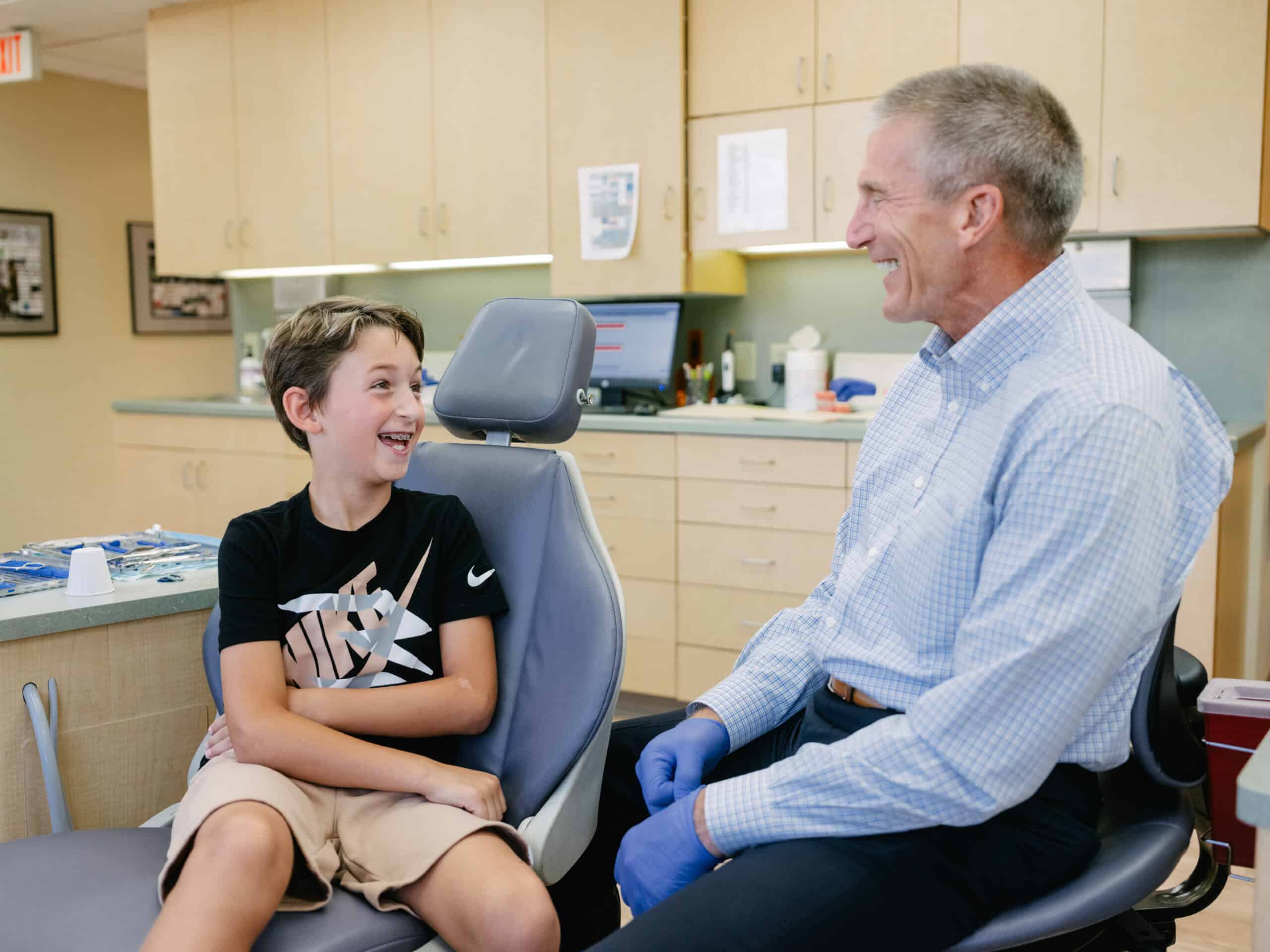Early Orthodontic Treatment for Kids
A healthy smile is a foundation for confidence that lasts a lifetime. Early orthodontic exams help guide healthy growth and identify issues before they become more complex. This allows us to start treatment at the right time, leading to simpler and more effective care.
At What Age Should a Child First Visit the Pediatric Orthodontist?
The American Association of Orthodontists recommends that every child have an orthodontic evaluation by age 7. At this stage, our orthodontists can assess your child’s growth and determine whether orthodontic treatment may be needed, and if so, when the best time to begin might be.
Many local dentists also recognize early orthodontic issues and may refer your child to our office even sooner for an expert opinion.

Why Early Orthodontic Screenings Matter?
Evaluating your child’s smile early helps identify potential orthodontic concerns before they become bigger problems. Early diagnosis and treatment can:
- Address bite issues that can damage teeth
- Guide erupting teeth into better positions
- Preserve space for incoming permanent teeth
- Reduce the risk of injury to protruding front teeth
- Guide jaw development
Early orthodontic care is about proactive prevention. Timely care can lead to simpler, more effective treatment for children.
When Is Earlier Better in Orthodontics?
Some orthodontic conditions are much easier to treat if caught early, while a child’s natural growth is still happening. For example:
- Crossbite: Early expansion can prevent more complicated treatments later.
- Protruding front teeth: Early treatment can reduce the risk of chipping, fractures, and self-image concerns.
- Crowding: When there is crowding of the erupting permanent teeth, early orthodontic treatment can help to address the crowding and manage space for erupting teeth.
- Underbite: Correcting an underbite while the child is still growing increases the chances that surgery can be avoided in the future.
How Early Orthodontic Treatment Can Help Your Child
If your child needs early orthodontic care, our doctors can guide jaw development and help permanent teeth come in properly. Early treatment may also:
- Address the width of the upper and lower arches with an expander
- Create proper space for erupting permanent teeth
- Prevent impacted teeth
- Correct thumb-sucking, tongue thrusting, or other oral habits
- Address swallowing or speech issues
Early treatment can make later orthodontic care easier and faster — supporting better overall oral health during your child’s growth years.
Correcting Bad Habits
Some habits can influence teeth and jaw development if they persist beyond early childhood:
- Thumb sucking: Natural in early years, but prolonged sucking can move teeth apart or change jaw shape, leading to an open bite.
- Tongue thrusting: Forward tongue pressure can also create an open bite and affect speech.
- Mouth breathing: Can alter jaw and facial development, causing serious orthodontic problems.
Various orthodontic treatments can help correct these habits, and the sooner they are addressed, the less damage may occur. Early evaluation ensures these issues are spotted before they become serious.
Does Every Child Need Early Treatment?
Not all children require early orthodontic treatment. Some orthodontic issues are best corrected later, once all permanent teeth have erupted. When your child visits our office, our doctors create a personalized plan based on growth and dental needs. If treatment isn’t needed right away, we will schedule your child for regular check-in visits to monitor their growth and tooth development. This ensures treatment begins at the ideal time for the best results while keeping you informed every step of the way.
Will Early Treatment Eliminate the Need for Braces Later?
Early orthodontic care can correct significant problems and prevent them from worsening, which often simplifies or shortens later treatment. Many children will still need a shorter Phase II (full braces) as teenagers, but in some cases, early care may resolve the issue completely, eliminating the need for braces later.
Continue Seeing Your Family Dentist
Even during orthodontic treatment, your child should continue visiting their family dentist every six months for checkups and cleanings. Routine dental care ensures gum and tooth health while braces or appliances are in place.
Frequently Asked Questions
What signs show my child might need early orthodontic care?
Watch for crowded or crooked teeth, difficulty chewing, mouth breathing, thumb-sucking after age 5, or jaws that seem uneven when your child bites. These are common indicators that an early orthodontic evaluation may help.
Is early orthodontic treatment painful for kids?
Not at all. Early treatments like expanders or limited braces use gentle, gradual pressure to guide growth. Most children adjust quickly and experience only mild, short-term soreness.
How long does early orthodontic treatment usually last?
Phase I treatment typically lasts 6–18 months, depending on your child’s needs. Afterward, your child may wear a retainer or simply be monitored until all permanent teeth come in.
Does insurance cover early orthodontic care?
Many dental insurance plans include partial coverage for orthodontic treatment, even for children under 10. Wilsonville Orthodontics will verify your benefits and help you maximize coverage before starting treatment.
How can parents make orthodontic visits easier for young kids?
Keep visits positive and routine. Let your child bring questions, praise their bravery, and maintain regular dental checkups. Our caring team makes early orthodontic appointments fun, supportive, and stress-free.